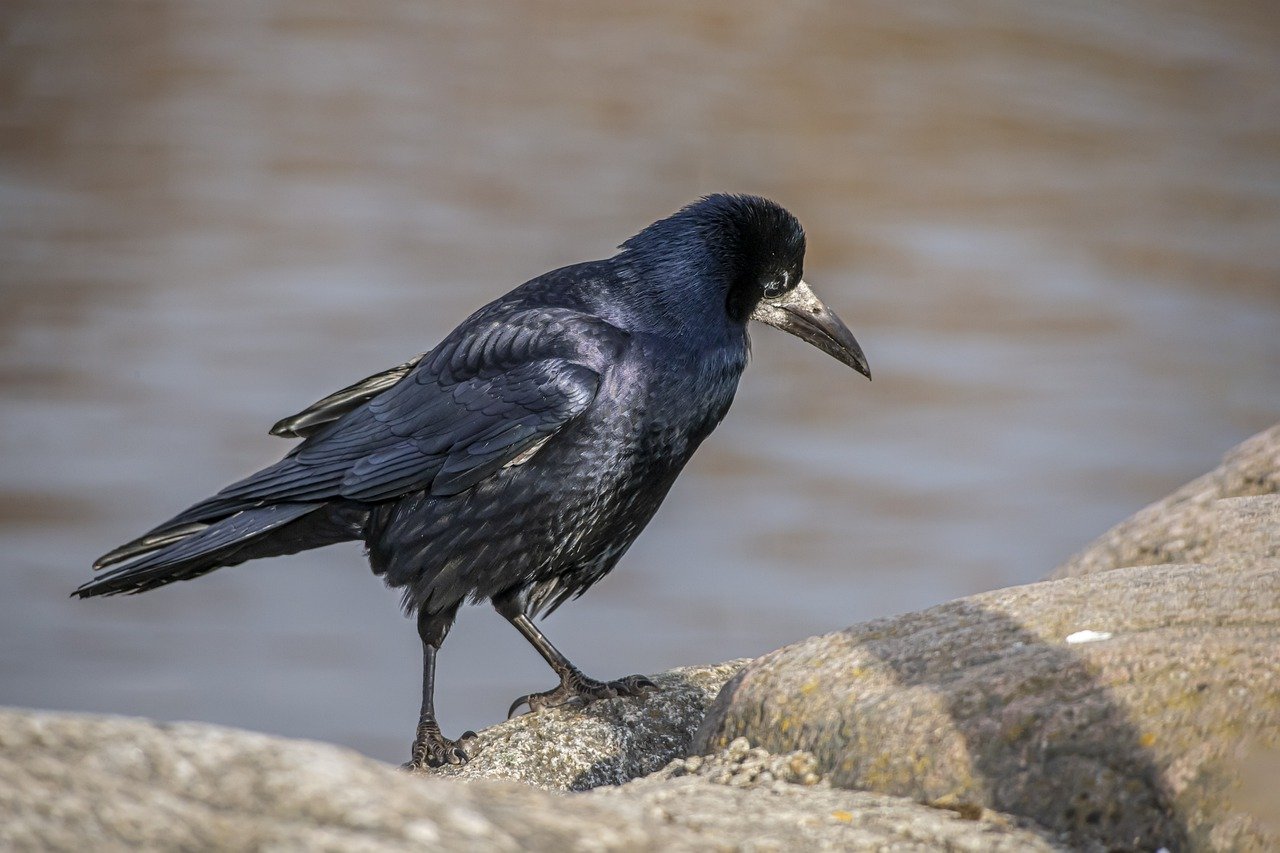The rook (Corvus frugilegus) is a member of the corvid family, which also includes crows, ravens, and jays. Here are some key points about rooks:
- Physical Description: Rooks are medium-sized birds with predominantly black plumage, although they have distinctive bare, pale skin around the base of their bills, which gives their faces a somewhat scaly appearance. They have stout, powerful beaks, well-suited for digging in the soil, and their legs and feet are also black.
- Habitat: Rooks are highly adaptable birds found across a wide range of habitats, including farmland, woodlands, parks, and urban areas. They are often associated with agricultural landscapes, where they forage for food in fields and pastures.
- Diet: Rooks are omnivorous birds with a varied diet. They feed primarily on invertebrates such as earthworms, insects, and larvae, which they extract from the soil using their strong bills. They also consume seeds, grains, fruits, berries, and carrion. Rooks are known to form large foraging flocks, especially during the non-breeding season.
- Behavior: Rooks are social birds and often gather in large, noisy colonies known as rookeries or rookwood. These colonies are typically located in tall trees, where rooks build their nests out of sticks and twigs. Rooks are highly intelligent and exhibit complex social behaviors, such as cooperative breeding, where individuals within the colony help raise the young of other members.
- Breeding: Rooks typically breed in colonies, with nesting sites often located in groups of trees, usually near farmland or other open areas. Breeding pairs construct their nests in the upper branches of trees using sticks and twigs, and they may reuse the same nest year after year. The breeding season usually begins in early spring, with females laying a clutch of 3 to 5 eggs.
- Conservation Status: Rooks are widespread and abundant birds, and their populations are generally stable. They are not considered threatened or endangered, although they may face localized threats such as habitat loss and persecution in areas where they are viewed as agricultural pests.
- Cultural Significance: Rooks have been featured in folklore, literature, and art throughout history, often depicted as symbols of wisdom or omens of impending events. They are also sometimes associated with agricultural practices, as their presence in fields and pastures can be both beneficial and problematic for farmers.
Overall, the rook is a fascinating and adaptable bird species known for its intelligence, social behavior, and ecological role as both a predator and scavenger in a variety of habitats.
Visited 863 times, 2 visit(s) today
Views: 1246
Subscribe to the newsletter:
